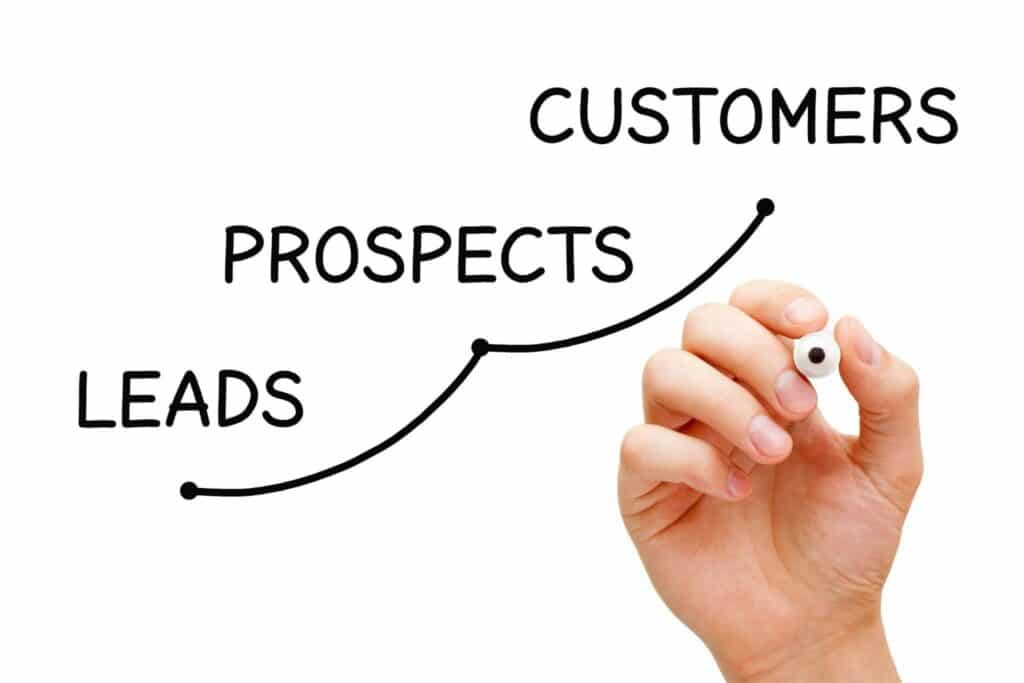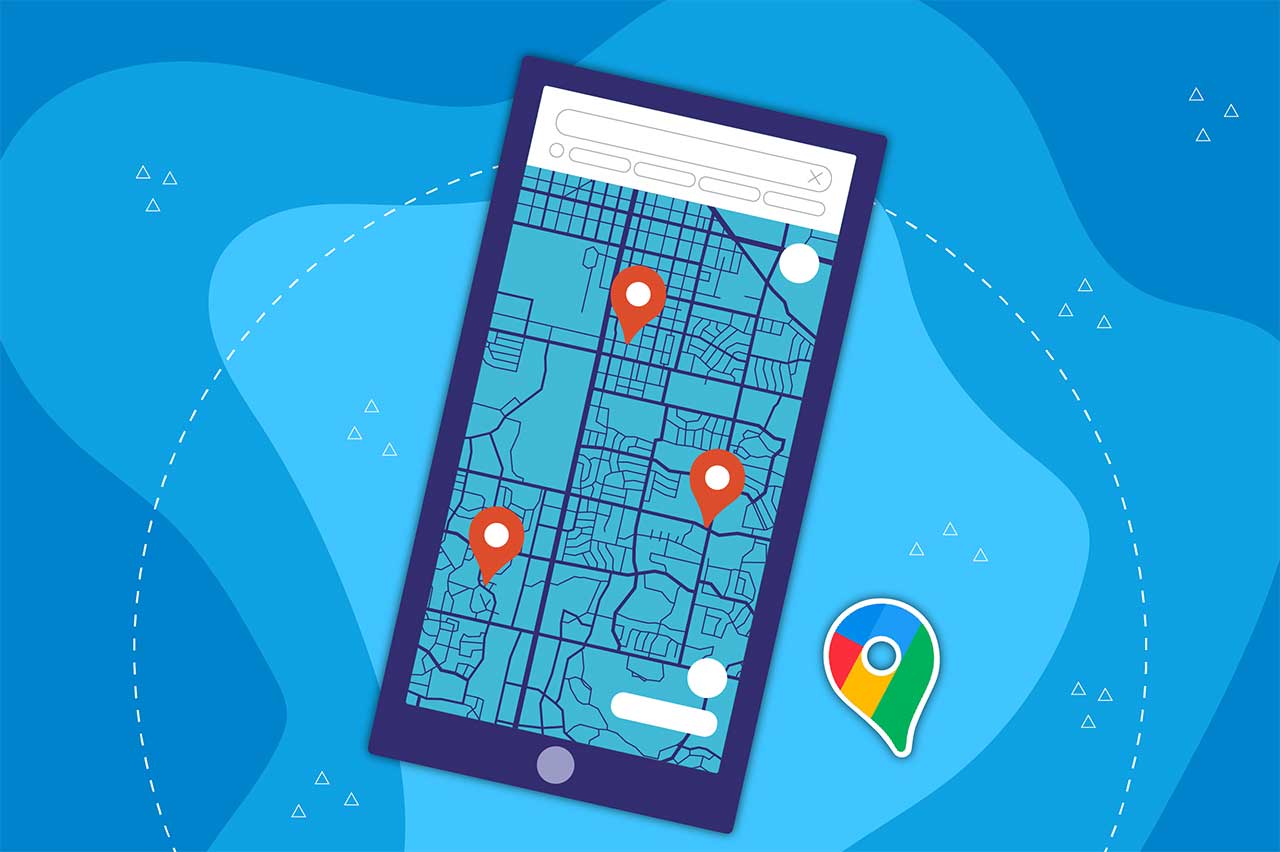
If you’re a local business with customers in your neighborhood, it’s important that you’re easily accessible to potential new leads.
Nowadays, the best way to become visible to your local customers is through Google Maps for direction requests, phone calls, reviews, and visibility through keyword searches.
In the world of SEO (search engine optimization), Google Maps is part of your local SEO scheme of things.
SEO isn’t just a marketing strategy used to reach the top of a nationwide SERP (search engine results page). You can also leverage your content to rank locally as well. One important avenue for this sort of increased relevancy is maintaining a presence on Google Maps.
46% of all searches on Google are related to local search queries. Furthermore, 78% of local mobile searches result in an offline purchase.
Why is Being on Google Maps Important?
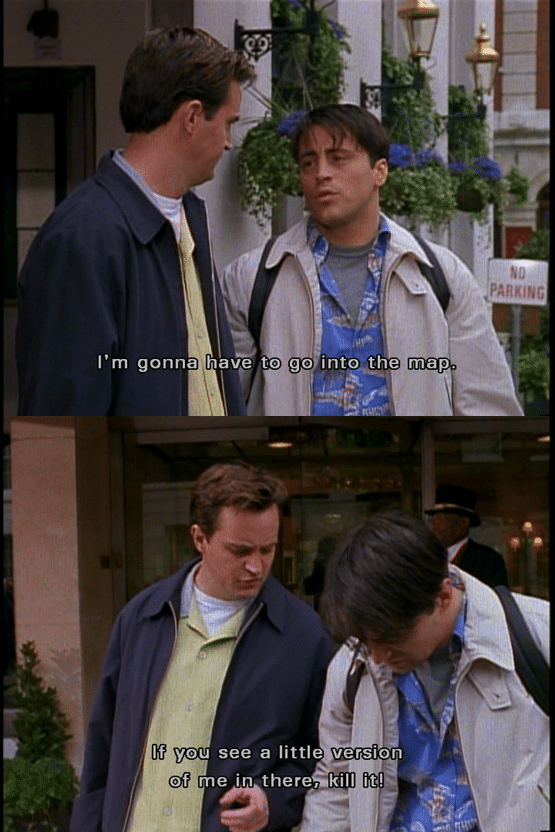
This is the power of Google Maps. Potential customers in your area are already looking to search engines for guidance on where to put their money. Be sure you’re one of the top contenders they see.
This is an integral piece of your digital marketing efforts called local search engine optimization orlocal SEO.
What is Local SEO?
Local SEO aims to increase your business's visibility to potential customers. Think about the last time you searched for a local business in your area.
Say you typed “smoothie places near me” into Google.
The first 3 results you see accompanied by a map –spare the paid ads– are Google’s top picks to assist you in your search for the best smoothie that’s nearest to you. This is called the Local Map Pack or the Local 3-Pack
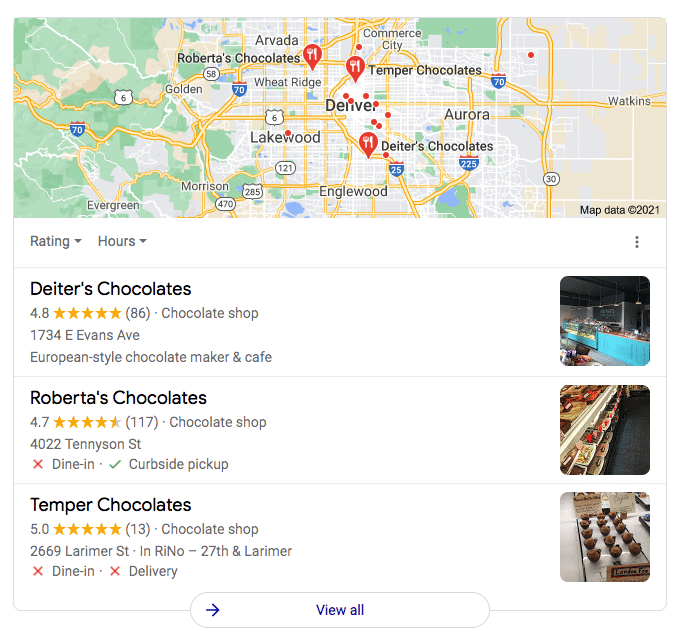
These listings aren’t random. Google has incorporated a ranking algorithm that takes signals from digital assets (such as your website) to rank businesses appropriately within the Map Pack.
When you throw local SEO into the mix, you can compete with these businesses in the Map Pack by optimizing for Google’s ranking signals.
The goal of local SEO can vary depending on what range a particular business wishes to reach. They can choose to optimize for neighborhoods, zip codes, cities, and municipalities.
Read more about the benefits of local SEO here!
How to Get Your Business on Google Maps
By now you’re probably wondering how to get in on this whole Google Maps thing.
Google Maps is connected to Google Business Profile, a (currently) free business directory synced to Google Search, and Google Maps. It connects to Google Maps on your computer, phone, tablet, and the Google Maps application.
FUN SECRET: Google Business Profile also connects to the Waze app. An application created by Google that pairs with Google Maps.
Create a Google Business Profile Page
Before you set off on creating a GBP listing, decide what address you would like attached to your business.
This is an easy decision if you have a brick-and-mortar location. Even if you have a service area business you can still get on Google Maps. You’ll simply have to use a home address belonging to someone involved in your business and where you receive snail mail for your business. Don’t worry, your personal information will be hidden on the actual listing!
The address that you associate with your listing will predominantly be the address that Google uses to rank your listing based on proximity to your customers. This address is used for verification purposes.
Once you know what address you’re going to use, it’s time to build out a Google Business Profile page. A potential customer will see it as an index of businesses that appears in the SERP. When leveraged intentionally, it can assist a business in advertising its location, gaining recognition, and acquiring relevant local traffic.
Google Business Profile lines out pertinent information for potential customers in one easy-to-find location. They can look at your listing to find your hours, contact information, and reviews from other customers. It’s a great platform for small to medium-sized businesses hoping to expand their reach.
Quick Step-By-Step Guide on Creating Your Listing
First, check to see if your business is already listed on Google Maps. If so, you can claim it. You’ll need to create a new listing if you don’t find your business. You can then verify the listing after you create it.
Next, fill out the relevant information about your business. Be sure to include your website, contact information, and, of course, your address.
After you complete your account, Google will send a verification postcard to the address you listed. Find the verification code on your postcard and input the code to complete the verification process.
Troubleshooting Why Your Business Isn’t on Google Maps
Sometimes you’ll go through this entire process only to realize your business still isn’t displayed on Google Maps properly. Here are a few reasons why that could be.
You didn’t properly verify your Google Business Profile listing. You can check your status at any time through the Google Business Profile Help Center. Simply visit the “Check your verification status” page and it will let you know if there are any issues. Or just go to the Home section on your GBP listing dashboard.
You moved locations. If you moved locations, you’ll need to update your Google Business Profile listing with your new address. Google may remove your listing or mark it as “Permanently Closed” if you don’t change your address sooner than later. Even a regular user who tried coming into your storefront at your previous address can report your listing as closed. Be on top of updating your listing!
Your Google Business Profile account was suspended. This can happen for a number of reasons. Here are just a few to watch out for:
- You updated the information on your listing and Google is waiting to verify. (Such as your new address).
- Google suspected “keyword spamming” in your business title.
- You forgot to hide your personal address from the listing (this is against Google’s policies).
- You otherwise violate Google’s policies.
How to Rank Higher on Google Maps
Put yourself on the map – literally and figuratively! Now that you have a shiny new spot within Google Maps it’s time to do the work to reach more customers. Here are some methods to rank higher.
Gain Local Authority
Much like general signals in SEO, the name of the game is authority. This is the key to a high position in Google Maps.
Authority is gained in a number of ways. One of the primary driving factors is the age of your listing. Google rewards companies that have been around longer. Why? Because this is a traditional marketing strategy. When a community recognizes a particular business as being well-known and trustworthy, Google looks to this as a strong ranking signal.
Google is also a fan of accuracy and industry authority. It’s important to maintain a cohesive image across the web. Be sure your business name, contact information, address, and website URL are all the same everywhere they appear. This means Yelp and all other directories.
If you’re a service area business and you’ve expanded to a new location, try to build out a new Google Maps listing. You will still need an address to attach your business to so it’s important to have a physical presence wherever you’re attempting to create your new listing. This can help your authority and ultimately boost your rating.
Pick a Relevant Primary Category
One of the most significant signals Google will reward is a relevant primary category. If you take advantage of this easy ranking optimization, it can give you a leg up over your competitors.
The primary category can be adjusted under the services tab on your Google Business Profile page. It’s important to choose a category that best displays what your business has to offer. This will play a big role in where your listing will appear.
Your Website’s Domain Is Valuable
Another important signal Google looks for is a relevant domain name. When you have a domain name that reflects your industry and location well, you’ll likely rank faster than your competitors without refined domain names.
If you can squeeze your industry keyword and service location into your website you’re more likely to rank higher on Google Maps. For example, fortcollinssmoothieco.com is likely to rank better than fruitsfruitsfruits.com if you want to be at the top of the search results for “fort collins smoothies”.
Update Your Local Community
Having a presence on Google Maps gives you a direct line of connection to any user that searches for your products/services. Use this as an opportunity to give them important information and updates. You can do that through Google Business Profile posts.
Google Business Profile posts are quick, often temporary updates that appear on your listing. You can use them to update potential customers on changes in hours, temporary closures, discounts, promos, and more.
This can be especially useful while we continue to navigate the world in the midst of COVID-19. Google Business Profile offers a specific post type to keep customers and potential customers informed on any virus-related updates.
Entering the Google Map Pack
The pinnacle of Google Maps is the Map Pack. Any time you search for a local business or service on Google, you’ll see it at the very top of the SERPs. The Map Pack is typically comprised of the top three ranking businesses for that particular keyword search query.
These featured locations will sometimes appear beneath paid advertisements from Local Ads.
The map pack will vary slightly depending on the service or product you’re searching for. Hotels, service areas, and physical businesses will all display differently.
Take hotels for instance; the user not only gets a list of nearby options, but they can also select booking dates or desired amenities.
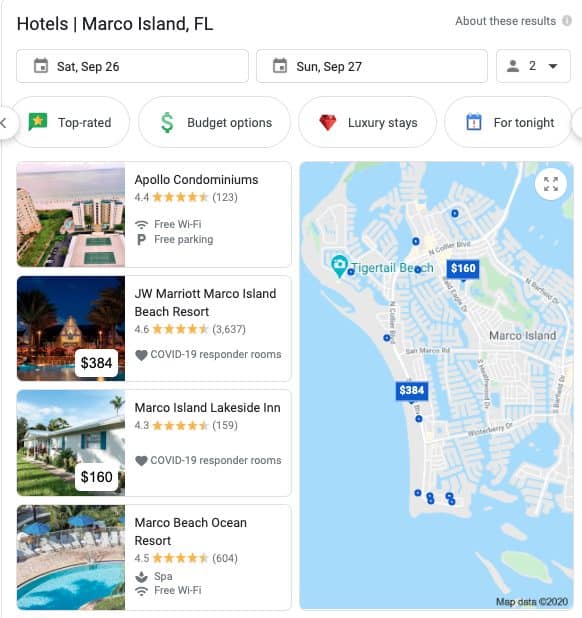
Although reaching the map pack is a goal every business hopes to reach, even if you don’t get there right away your rank on the full list still matters. The more relevant Google deems your business to a searcher, the higher you will appear.
Final Considerations
There are a few other considerations to weigh when you check your status on Google Maps. If you Google the exact same keyphrase on a phone and a computer at the exact same time, you will likely see two different lists. This is unavoidable and shouldn’t be cause for alarm if you’re ranking lower on one device versus another.
You should take notice of these differences, not rush to make adjustments. Doing anything rash is not recommended.
Ranking will also fluctuate with the time of day. If your business is closed and another is still open, theirs will likely appear higher for a search query where you aren’t open. Remember, Google’s goal is to design the easiest experience for the user.
Keep an eye out for sneaky ranking tricks your competitors might attempt. As we went over earlier, relevancy is key. With that in mind, many businesses will fall back on “keyword spamming”. This is when a business adds a city name or service keyword to their business name that isn’t actually in their legal name. (i.e. Muriel’s Bakery → Muriel’s Cookie Bakery | Nowhere, Kansas)
If you notice this behavior, report it. You can do this by clicking on their listing and using the suggest an edit button to let Google know you suspect keyword spamming.
Get in Touch With Beyond Blue Media for All Things Local SEO
Running a business while fostering a healthy marketing presence is a lot to juggle. Trust us, we get it. That’s where our team at Beyond Blue Media comes in handy.
Not only can we step up your local SEO game, but we can also help with other marketing tasks such as web design, video production, social media, and more! Reach out today. We can’t wait to help your business reach new heights!


